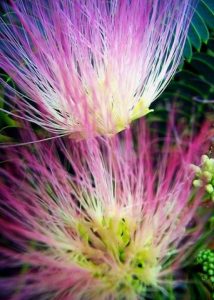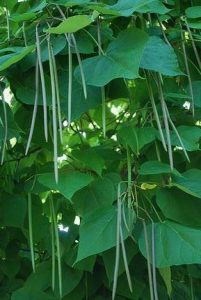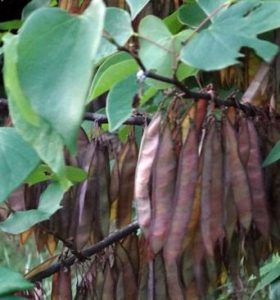We want our landscaping to enhance our lawns, not create problems and messes. But with regards to trees with seed pods, you often get both. And while they can be annoying, the positives might outweigh the inconveniences. Here are a few DFW trees with seed pods you might want to consider.

MIMOSA
The mimosa, or silk tree or silky acacia has long, well-defined fern-like leaves. The six-inch-long mimosa pods house yellowish-brown bean-shaped seeds. The seeds have an “armor” that makes them viable for several years. The pods ripen in August and September and remain on the tree through winter. Because the mimosa grows in a variety of soils, produces a large seed crop, and re-sprouts when damaged, it competes for sunlight and nutrients with native trees and shrubs. Therefore, it can become a nuisance along river or creek banks, where its seeds are easily transported in water. On the plus side, this tree features one inch long showy and fragrant pink flowers.

CATALPA
Easily recognizable by its large, trumpet-shaped, white or yellow flower and heart-shaped or tri-lobed leaves, and its 60 ft. high and 30 ft. wide canopy gives protection and a home for many birds. In autumn, their pods mature, growing to between seven and 20 inches long, resembling a green bean pod, each one equipped with two small wings to assist in wind dispersal. Unfortunately, they also drop large dark-brown bean pods during late summer.
The catalpa leaves are the sole source of food for the caterpillar of the sphinx moth. In years where the caterpillars flourish, they can destroy an entire tree. While the trees rapidly replace the missing leaves, multiple generations can eat at a devastating rate. If not stopped, the tree will die.Because the caterpillars make exceptional fish bait, some anglers grow catalpa for weekend fishing trips. As far as DFW trees with seed pods, do your homework before planting a Catalpa. They make such a mess on the lawn and the trees get so big, they are a serious commitment.

Smaller Trees With Seed Pods
TEXAS REDBUD (cercis canadensis)
As far as DFW trees with seed pods, this is one worth the mess. Texas Redbud only grows to about 10-20 feet and features glossy, fuzzy leaves with wavy edges and red seed pods. Its purple flower clusters appear in early spring and continue to bloom as the heart-shaped leaves develop. The deciduous leaves are rounded at the tip, with slightly wavy edges, and glossy, and usually some fuzziness underneath. In the fall, they change to gold or red. These glossy, rounded leaves make for a desirable shade and the flowers attract bees and butterflies.
While many species of these trees can produce pods that are annoying and maybe even somewhat unsightly, that downside is often offset by the resulting shade and the attraction of wildlife. Besides the purple flowers, there are redbuds that have white flowers. These are often referred to as “whitebuds”. If you want more color in your landscape, you should consider the cultivar “Forest Pansy”. These redbuds produce purple leaves that slowly turn green as they mature.
Trees with seed pods need to be fertilized regularly or root level injections of fertilizer can give them the nutrients they need for a growing season. Redbuds often have disease issues like Anthracnose, so benefit from a fungicide treatment as needed. For more about root level fertilization (also known as Deep Root Feeding), check out this article about Deep Root Feeding at Green Top Lawn Care.com
